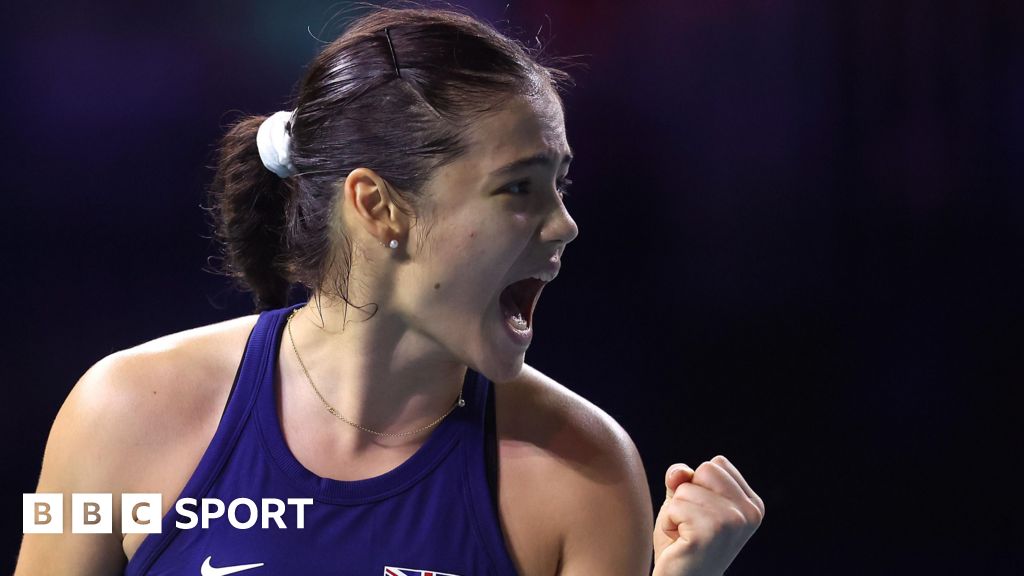NFL
At long last, F1 is back to its ultra-competitive, rivalry-filled best

Stay informed on all the biggest stories in Formula One. Sign up here to receive the Prime Tire newsletter in your inbox every Tuesday and Friday.
If you became a Formula One fan in 2021, you might have spent the past couple of years wondering when things would get good again.
That season, as fraught and toxic as it was through Max Verstappen and Lewis Hamilton’s intense championship fight, was F1 at its best. Two drivers and teams went all-out for the championship, and momentum swung back and forth across the season right to the very last race.
Coming out of the depths of the COVID-19 pandemic in a year when live sport fully returned, F1 experienced rapid growth and a swell in interest, the momentum peaking through 2021. All the work Liberty Media had done since acquiring the series in 2017 was paying off handsomely. Fans wanting the “Drive to Survive” tension every other Sunday felt satisfied. The good times looked to be here to stay.
Then Verstappen and Red Bull sparked an unprecedented period of domination for F1, which was quite different from the ultra-competitive, ultra-tense sport millions of new fans had signed up for.
Throughout 2023, they sat down knowing they’d likely spend the next 90 minutes to two hours watching another Verstappen victory and hearing the latest rendition of the Dutch national anthem at the end.
I wrote last year about the potential impact such dominance had on F1, especially in the United States. The surge in viewership through 2021 had carried into 2022 to record levels, only to drop by 9.1 percent last year.
The numbers were still good, but the dip proved that no matter how much push was behind new races such as Miami or Las Vegas to keep cracking the American market, there was still no better advertisement for F1 than the on-track product itself. If the sport wasn’t competitive, people may not stick around. The start to this season, when Verstappen won by an average of 15 seconds each weekend, did little to ease that concern.
At this rate, could we really get through another couple of years of one-driver domination and maintain the same positivity about the direction of F1?
It was in McLaren’s motorhome on Saturday while speaking to Zak Brown as part of a written media session that it really struck me. Yes, things have changed. We’re finally back to the good times in F1.
Brown, the CEO of McLaren Racing, was reflecting on Lando Norris’s collision with Verstappen in the closing stages. The day before, he’d taken aim at Red Bull for a “lack of respect.” He called for the FIA to strengthen its stewarding to avoid a repeat of what happened — even though Norris himself had drawn a line under the whole affair on Thursday, saying Verstappen did not need to apologize.
For it to even be a conversation was a sign of how much more competitive F1 has become; that we could even ask Brown about the prospect of taking the fight to Red Bull this year and whether, as one reporter put it, McLaren was prepared for the fight to possibly get as “nasty” as it did in 2021.
The fight is on between F1’s top four every weekend now. (James Sutton/Formula 1 via Getty Images)
“We’re prepared to go toe to toe,” Brown said. “Nasty is not how McLaren goes racing. I think you can go toe to toe, but you don’t have to be nasty about it.
“They seem to, at times, have a win-at-all-costs mentality. That’s not how we go racing. But we think you can go toe to toe and take the fight to them our own way.”
I couldn’t help but smirk. Not for Brown’s comment, but for the fact that the needle that’s been missing was back. F1 has been such a foregone conclusion at the front in the past two seasons there’s been very little mud-slinging or tension brewing between teams. Everything has been cordial. A bit too nice, even.
Sport thrives off rivalry. It helps provide some of the most delicious and exciting narratives. With the rise of competition, rivalry comes more easily.
And it’s building both ways. When asked about Brown’s “lack of respect” comment on Sunday, Red Bull team boss Christian Horner said he was “not going to dignify that with an answer.” To the Dutch press on Saturday, Verstappen simply said: “Who is Zak Brown?” He then laughed and walked away.
So Red Bull versus McLaren is heating up. And now Mercedes is on the rise, adding to the excitement at the front by giving us six winners from four teams through the first half of the season. It’s the kind of competitive picture F1 has long-craved, but it seemed a long way off as recently as a few months ago.
“Formula One can’t be in a better place at the moment,” Horner said. “If you look at the last five or six races, we’ve had Lewis, we’ve had Lando, we’ve had Max, we’ve had Charles Leclerc… It’s moving around. You can see by the crowds that it’s delivering and so on.”
The TV numbers are also going in the right direction. Prior to the Spanish Grand Prix, ESPN reported five consecutive races with increased year-over-year viewership. As the battle at the front develops and the intrigue over who might win each week builds, the uptick may only continue.
“It’s awesome,” Brown said. “From the last few races, really outside of the first three or four races where we all thought it was going to be more of the same, I think Formula One has been epic.
“Would you be shocked if any of the top eight drivers win on Sunday? That’s a pretty cool place for the sport to be.”
It’s a vindication of the direction F1 has taken under Liberty, particularly with aspects such as the cost cap and the restrictions of aerodynamic development, to create a more even field. Verstappen maintains a significant points lead going into the second half of this season, but few would think 2025 is quite the foregone conclusion it seemed a few months ago.
And then, come 2026, it might all be blown to pieces again. The start of a new regulation cycle will always create a split between those who get it right and those who get it badly wrong, just as we saw in 2014 and 2022. One team could steal the march once again.
Brown admitted there was a “little bit of concern” it would upset the growing competitive balance in F1 but noted the need for these kinds of overhauls to “stay true to what Formula One is” by advancing technology.
Regardless of what happens come 2026, let’s enjoy the here and now. F1 is back to delivering the kind of competition we all crave and making good on what so many fans signed up for in the first place: close, hard racing on-track and explosive rivalries off-track.
It can only be good news for the health of our sport.
Top photo: Bryn Lennon/Formula 1 via Getty Images







![Casino Rocket review 🚀 Up to €1,000 + 150 Free spins [2024] Casino Rocket review 🚀 Up to €1,000 + 150 Free spins [2024]](https://talksport.com/wp-content/uploads/sites/5/2024/11/talksport-casino-rocket-op.jpg?strip=all&quality=100&w=1920&h=1080&crop=1)


